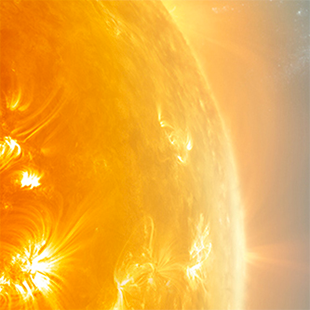Astrobiology Standards Alignments
Astrobiology Standards Alignments
Grouped by Disciplines
Earth and Space Science | ||
Grade | Standard | NGSS PE (link) |
|---|---|---|
K | Use a model to represent the relationship between the needs of different plants and animals (including humans) and the places they live. | |
Middle School | Analyze and interpret data to determine scale properties of objects in the solar system. | |
Middle School | Construct a scientific explanation based on evidence from rock strata for how the geologic time scale is used to organize Earth's 4.6-billion-year-old history. | |
Middle School | Construct an explanation based on evidence for how geoscience processes have changed Earth's surface at varying time and spatial scales. | |
High School | Construct an explanation of the Big Bang theory based on astronomical evidence of light spectra, motion of distant galaxies, and composition of matter in the universe. | |
High School | Communicate scientific ideas about the way stars, over their life cycle, produce elements. | |
High School | Apply scientific reasoning and evidence from ancient Earth materials, meteorites, and other planetary surfaces to construct an account of Earth’s formation and early history. | |
High School | Analyze geoscience data to make the claim that one change to Earth's surface can create feedbacks that cause changes to other Earth systems. | |
High School | Develop a quantitative model to describe the cycling of carbon among the hydrosphere, atmosphere, geosphere, and biosphere. | |
High School | Construct an argument based on evidence about the simultaneous coevolution of Earth’s systems and life on Earth. |
Life Science | ||
Grade | Standard | NGSS PE (link) |
|---|---|---|
K | Use observations to describe patterns of what plants and animals (including humans) need to survive. | |
1 | Make observations to construct an evidence-based account that young plants and animals are like, but not exactly like, their parents. | |
2 | Make observations of plants and animals to compare the diversity of life in different habitats. | |
3 | Use evidence to support the explanation that traits can be influenced by the environment. | |
3 | Analyze and interpret data from fossils to provide evidence of the organisms and the environments in which they lived long ago. | |
5 | Develop a model to describe the movement of matter among plants, animals, decomposers, and the environment. | |
Middle School | Conduct an investigation to provide evidence that living things are made of cells; either one cell or many different numbers and types of cells. | |
Middle School | Analyze and interpret data for patterns in the fossil record that document the existence, diversity, extinction, and change of life forms throughout the history of life on Earth under the assumption that natural laws operate today as in the past. | |
Middle School | Construct an explanation based on evidence that describes how genetic variations of traits in a population increase some individuals’ probability of surviving and reproducing in a specific environment. | |
High School | Construct an explanation based on evidence for how the structure of DNA determines the structure of proteins which carry out the essential functions of life through systems of specialized cells. | |
High School | Plan and conduct an investigation to provide evidence that feedback mechanisms maintain homeostasis. | |
High School | Construct and revise an explanation based on evidence for how carbon, hydrogen, and oxygen from sugar molecules may combine with other elements to form amino acids and/or other large carbon-based molecules. | |
High School | Construct and revise an explanation based on evidence for the cycling of matter and flow of energy in aerobic and anaerobic conditions. | |
High School | Ask questions to clarify relationships about the role of DNA and chromosomes in coding the instructions for characteristic traits passed from parents to offspring. |




